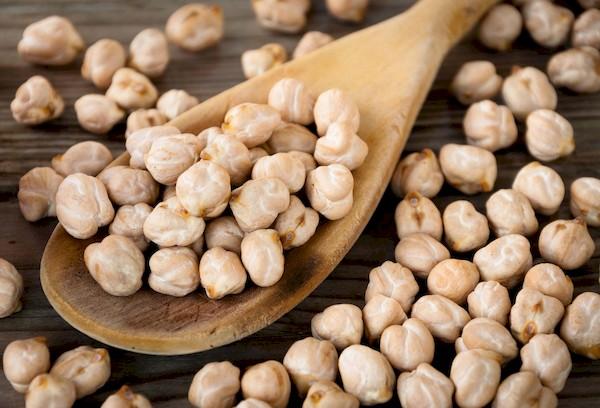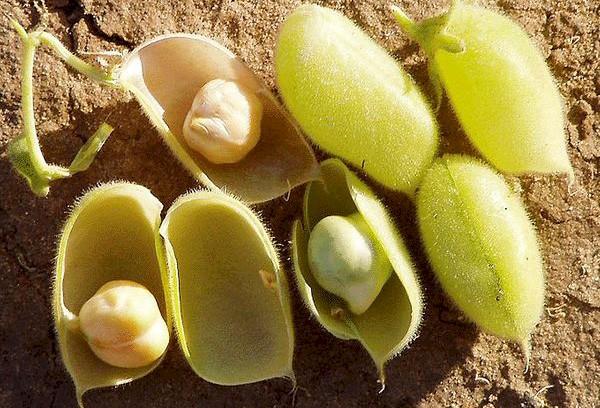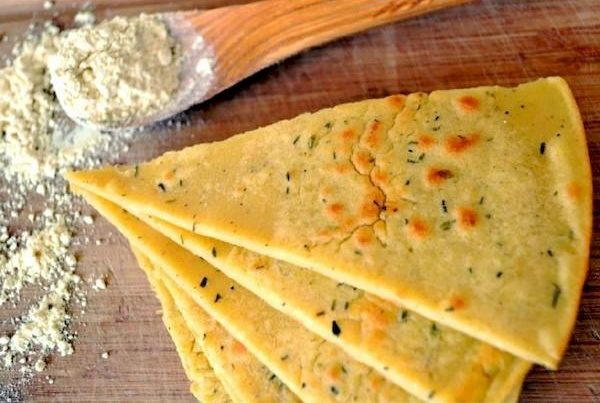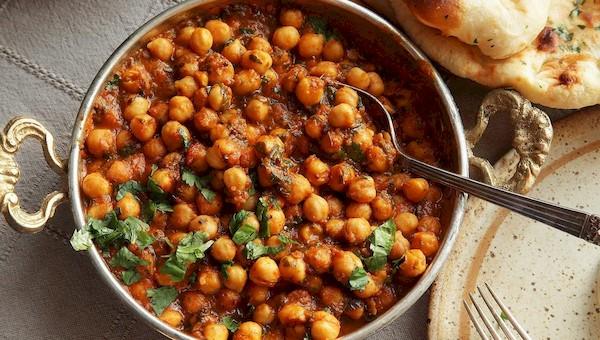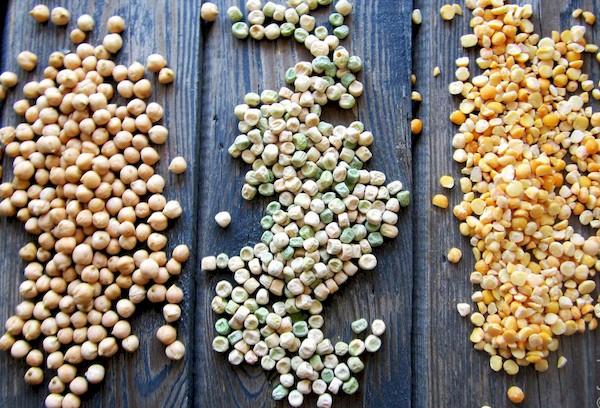What are chickpeas in cooking: taste, chemical composition, calorie content and BJU
Chickpea (lat. Cicer arietinum) is a herbaceous leguminous crop of the Legume family. The plant is heat-loving and tolerates long droughts well. It is grown mainly in South and Western Asia: India, Pakistan, Iran, Turkey and Syria. More than 30 varieties are cultivated in Russia, including 6 new varieties.
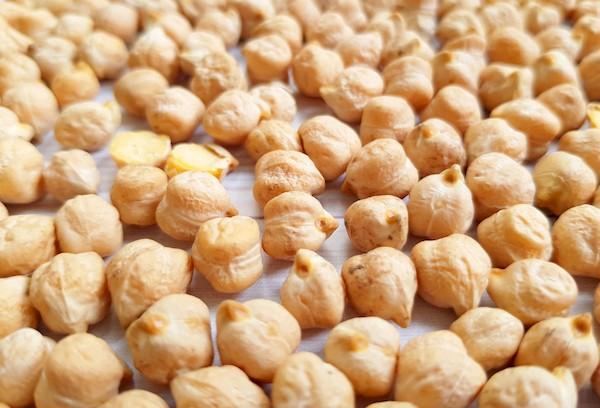
Other names for chickpeas are chickpeas, lamb's peas, walnuts, and nohut. Turkey and Syria are considered its homeland, where the distant “ancestor” of the culture, Cicer reticulatum, grew more than 7 thousand years ago. Chickpeas were first mentioned in written sources by Homer, in the famous “Iliad.” The ancient Greeks made porridge from these beans, known in those days as “pulse,” and also consumed them roasted and raw, like peanuts. Today, lamb peas are no less common than in ancient times - they are widely used in cooking for preparing first courses, side dishes, salads, etc.
What are chickpeas made from?
Chickpea seeds, which are extracted from ripened fruits (beans), are eaten. Each “pod” contains 1-2, rarely 4 “peas”. They have a characteristic, lumpy shape, reminiscent of the head of a ram or an owl, for which the crop received one of its names - lamb peas.
The color of the seeds, depending on the variety, varies from yellow to dark brown, almost black. The size is small, 5-15 mm in diameter. The peas are quite light, weighing 1000 pcs. is only 150, maximum 300 g.
Chickpeas do not taste like any other known legume. It has a spicy, “nutty” flavor, which is especially pronounced when fried. When cooked, the taste of the product resembles mashed potatoes.
What is contained in 100 grams of chickpeas
Chickpeas are a very high-calorie and nutritious product. 100 g of seeds contains:
- 378 kcal;
- 20.47 g proteins;
- 6.04 g fat;
- 62.95 g carbohydrates.
The seeds of the crop are a valuable source of the following elements:
- gland;
- potassium;
- manganese;
- copper;
- Selena;
- phosphorus;
- zinc;
- vitamin B1 (thiamine);
- vitamin B6 (adermina);
- vitamin B9 (folic acid);
- essential amino acid lysine;
- dietary fiber.
Their high protein content makes chickpeas an excellent substitute for animal products in vegetarian and vegan diets (notably, dark grains contain more protein than light grains). It allows you not only to maintain a feeling of fullness for a long time, but also to enrich the body with useful substances. At the same time, there are practically no contraindications to the use of this type of bean - it should be consumed with caution and in small quantities by people prone to increased gas formation, suffering from ulcers, cystitis, gout and thrombophlebitis.
Types of chickpeas
Currently, there are several dozen varieties of chickpeas. They are conventionally divided into 4 groups:
- Asian;
- eastern;
- Eurasian;
- Mediterranean
The listed categories, in turn, are classified according to the characteristics of their growing conditions. So, chickpeas happen:
- Anatolian;
- Afghan;
- mountain-European;
- steppe;
- Turkestan.
There is also a classification of crops depending on the color of the seeds. Chickpeas are divided into the following types:
- white;
- yellow;
- green;
- red;
- brown;
- black.
Another important criterion is the appearance of the seeds. On this basis, chickpeas are divided into the following groups:
- desi – brown or black varieties, used primarily for the production of chickpea flour;
- Kabuli - fruits with a light shell, widely used in cooking.
The main suppliers of desi chickpeas to the world market are Iran, India, Ethiopia and Mexico. Kabuli grows in Pakistan, Chile, southern Europe and northern Africa.
What is prepared from chickpeas: 10 popular dishes
Chickpeas are suitable for any type of heat treatment - they can be boiled, fried, stewed and baked. The following is prepared from the seeds of the crop:
- hummus (a traditional Middle Eastern snack made from boiled and pureed grains, seasoned with sesame paste, olive oil, garlic, lemon juice and paprika);
- falafel (oriental dish in the form of deep-fried balls of crushed beans, seasoned with spices);
- leblebi (a popular delicacy in Iran and Turkey made from chickpea seeds fried without the use of fat, consumed in natural or sweetened form with sugar as an independent dish or added to desserts);
- dhokla (a dish of Indian cuisine, it is a steamed pastry based on chickpea-rice paste);
- farinate (Italian flatbread made from chickpea flour, usually served with vegetables, less often with cheese).
In Russian and European cuisine, chickpeas are used to prepare the following types of dishes:
- soups;
- puree;
- viscous and crumbly porridges;
- stew;
- casseroles.
Chickpea puree is also added to minced cutlets and pates, and fried seeds are added to various salads. No less common is the “snack” option, when chickpeas are fried or baked with garlic and spices and eaten like crackers.Flour and seeds are also used in the preparation of baked goods and desserts.
How to choose quality chickpeas in the store
To get the most benefits from chickpeas, it is important to choose the right product. When purchasing, you should pay attention to the following points:
- What do "peas" look like? They should be free of chips and damage, have a close to round shape, uniform color, smooth structure and approximately the same size.
- Quality of packaging. It must be sealed, without tears or damage, preferably transparent, so that you can clearly see what kind of product is inside, whether there are any foreign impurities, debris or plaque on the grains.
- Best before date. As a rule, it is no more than 12 months. It is not recommended to store chickpeas longer.
After opening the package, it is worth assessing the smell of the product. Good chickpeas exude a light grainy and nutty aroma. It is better to store grains in a glass jar, in a cool and dark place. You should not place it near products that have a strong smell - the seeds, like a sponge, will quickly absorb it.
What is the difference between chickpeas and peas
Some consumers mistakenly consider chickpeas to be a type of pea. But this is a misconception; cultures have a number of differences.
Let's look at how chickpeas differ from peas:
- Family affiliation. It is known what both crops belong to - they are representatives of the Legume family of the Dicotyledonous class. But the name of the genus is different: chickpeas are classified as Cicer arietinum, and peas are classified as Pisum.
- Growing conditions. Chickpeas need a warmer climate; the optimal temperature for flowering and ovary formation is 24-28°C, while peas can develop normally in less “greenhouse” conditions.
- Number of seeds in a pod.As mentioned above, one chickpea fruit contains 1-2 “peas,” and there can be up to 10 of them in a pea pod.
- Appearance of pod and seed. Pea pods are elongated, slightly curved, chickpea pods are short and swollen. The seeds of the first crop have an almost perfect spherical shape and are colored green. The second is characterized by the lumpy shape of the grains, the shade of which can vary from light yellow to dark brown, depending on the variety. Moreover, after industrial processing, peas are usually divided into halves, while chickpeas retain the integrity of the grain.
- Chemical composition and calorie content. Peas contain slightly more protein than chickpeas (about 20.5 g per 100 g of product), but are inferior to the latter in terms of calories, fat and carbohydrates.
- Processing before cooking. Chickpeas need to be soaked longer, preferably at least 12 hours, while peas need 1-2 hours.
- Cooking methods. If dried peas are mainly boiled, then chickpeas can also be fried, stewed or baked.
It’s also worth considering the body’s reaction to these types of legumes - as a rule, peas cause more bloating than chickpeas.

